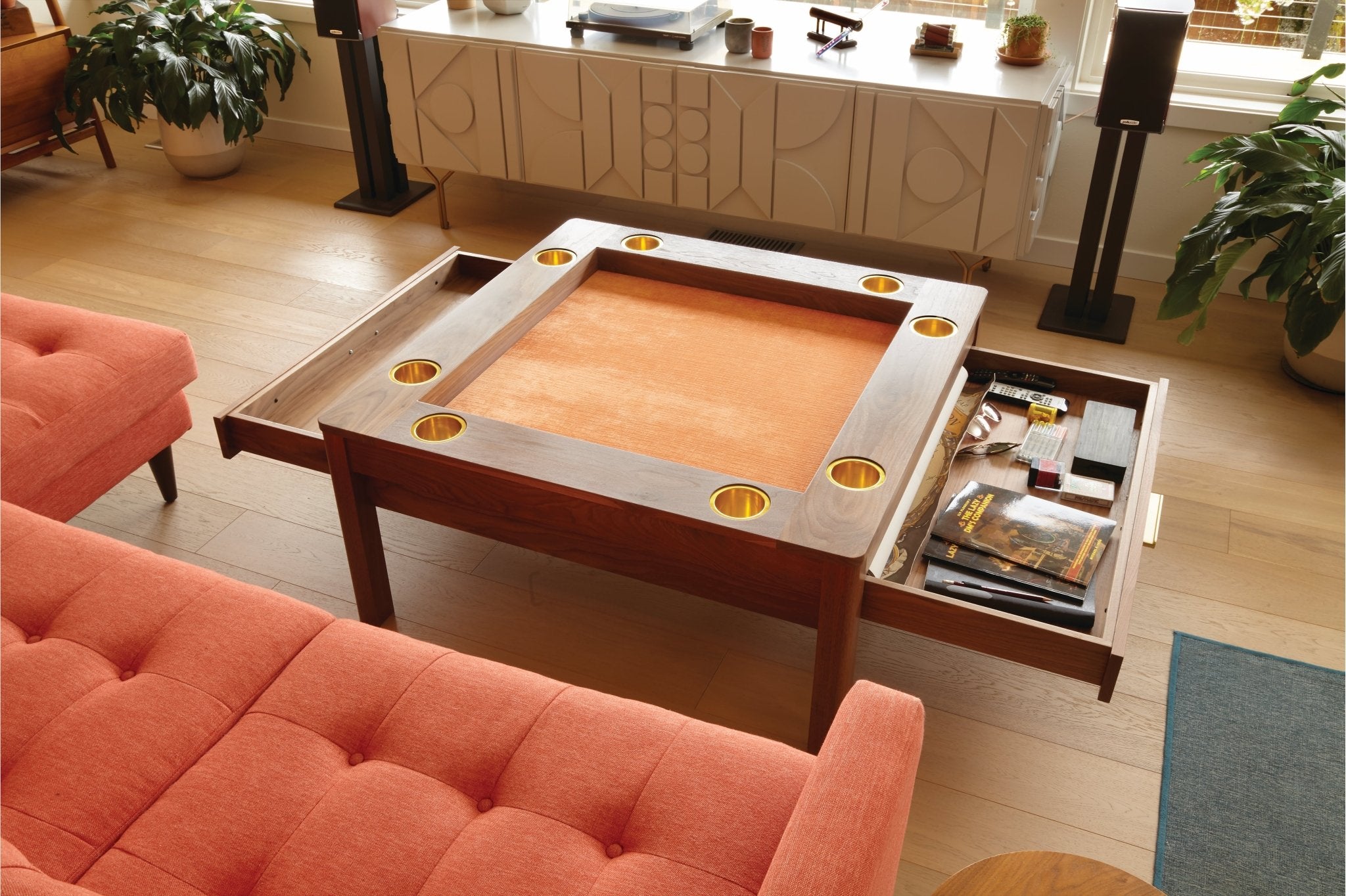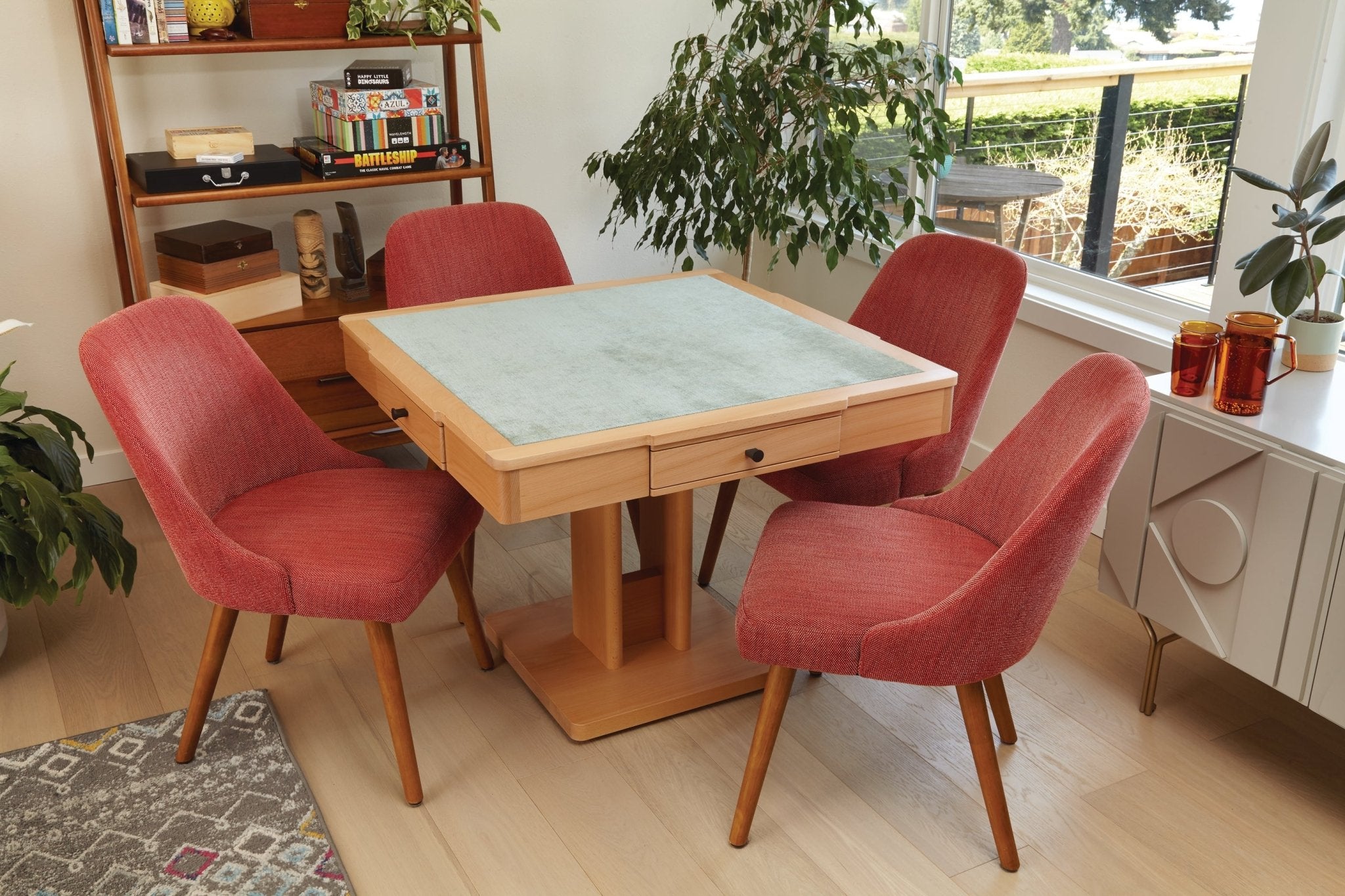Top 20 Best 5-Player Board Games
It’s game night, and you and your friends are ready to gather around the modern board game table and you're searching your board game shelf for the right game. If there are five players, there are a lot of great options for the group. No matter the age, difficulty level, or time required, there’s a perfect tabletop game for your crew. These are our picks for the best 5-Player Board Games:
Top 3 Best Party Games
1. Betrayal at House on the Hill

Suspense mystery and betrayal are all things to expect from Betrayal at the House on the Hill. Use tiles to create a new and unique haunted house every new time that you play the game.
Discover who the traitor in the group is and defeat them before it is too late! This game is ideal for families and parties.
Features:
- Family Game
- Thematic
- 60 Minutes
2. Mysterium

It’s about to get spooky. There’s a murder in the mansion. The best psychics and spiritual professionals come together to identify the killer. The victim’s ghost helps the psychics and provides clues and hints throughout the game.
It’s a game of discussion, deduction, and communication. Or maybe just luck. Only the best psychic can discover the truth the fastest.
Features:
- Thematic Game
- Murder-Mystery
- 45 Minutes
3. Secret Hitler

It’s liberals against fascists. But, don’t worry; it’s in a fun way! This game is good regardless of the number of players you have because there’s a board for each number of people.
Become a politician and enact policies on either the liberal or the fascist side, and remember not to trust anyone. We recommend this game for beginners in the board game community and large parties.
Features:
- Party Game
- Deduction
- 45 Minutes
Top 3 Best Eurogames
1. Istanbul

Istanbul is a newer award-winning Eurogame where you strategically place your assistants around the board to gain special abilities to achieve rubies eventually. The first player with enough rubies will win the game.
While this game has many classic Eurogame qualities, it ultimately stands alone by being unique.
Features:
- Strategy Game
- Economic
- 60 Minutes
2. Puerto Rico

In this game, you’re a colonist going to the New World, and you’re trying to establish your fortune by building plantations and cities. Puerto Rico is a game where every player chooses a different role and begins the game with their player board, a little money, and a single tile.
This game may feel very similar to other games. However, because it was among the first of its kind, Puerto Rico laid the groundwork for games that have come out since.
Features:
- Strategy Game
- Economic
- 120 Minutes
3. El Grande

It’s considered one of the best board games of all time, and what components does it have? Cubes. El Grande is a game where you can only win by getting the most cubes of your color in each region on a map of Spain.
This classic Eurogame becomes a competitive war against your fellow players for dominance.
Features:
- Strategy Game
- Eurogame
- 90 Minutes
Top 6 Best Strategy Games
1. 7 Wonders

It’s a battle of ancient civilizations to see who can become the most prosperous, oh and by the way, you’re constructing one of the seven wonders. Each of the wonders that characters can be assigned to are unique and have their own special abilities.
Play cards to create resources and gain the most points to win the game.
Features:
- Family Game
- City Building
- 30 Minutes
2. Lords of Waterdeep

Lords of Waterdeep Is a board game that incorporates Dungeons and Dragons elements while incorporating classic Eurogame aspects. It’s a worker placement game in which players go on quests to earn rewards and build influence in your city.
The game is shorter, so you’ll be able to play multiple rounds in one night if you wish. You may enjoy this fantasy-themed version of a worker placement Eurogame if you’re a Dungeons and Dragons fan.
Features:
- City building Game
- Fantasy
- 60 Minutes
3. Game of Thrones Risk

Game of Thrones fans will jump at the opportunity to try this theatrical version of Risk. Immerse yourself in Westeros and Essos as you fight for territory and power. Be prepared to dedicate your whole night to finish this game because it’s a long one.
Risk Game of Thrones also includes colorful miniatures of each house, so if you wanted to play with seven people, you could. Game of Thrones fans will enjoy the mixture of lore and strategic gameplay in this edition of Risk.
Features:
- Thematic
- Wargame
- 200 Minutes
4. Powergrid

In Powergrid, you are a power company in the 1950s trying to supply as much electricity to people for as cheap as possible.
Powergrid is a competitive board game where only one player can win in the end. This game requires deep thought and a complex strategy Because there are so many elements to consider during the gameplay.
Features:
- Strategy Game
- Economic
- 120 Minutes
5. Caverna: The Cave Farmers

In Caverna: The Cave Farmers, you are a dwarf clan leader whose goal is to have children and develop the land around your cave as you dig deeper into the mountain.
The game consists of an exuberant amount of components, and you’ll never have to fear not knowing what to do during your turn.
Features:
- Strategy Game
- Economic
- 120 Minutes
6. Cosmic Encounter

Cosmic Encounter is an older game created in 1977, but it has remained playable for decades. The players become leaders of their alien races, and the goal of the game is to set up colonies on other players' systems.
There are so many types of aliens and scenarios in the game that no playthrough will ever be the same. Form alliances with your friends and work together to ensure ultimate victory!
Features:
- Strategy Game
- Science Fiction
- 90 Minutes
Top 5 Best Games for Kids
1. Trekking the National Parks

Trekking the National Parks is a great way to visit all of the famous national parks in the USA without ever leaving your living room.
Visit and camp at the parks while collecting colorful stones to earn victory points. The player with the most victory points at the end of the game wins. This game is not only beautiful but educational. Maybe you can’t go to the Grand Canyon right now, but you can visit by playing Trekking the National Parks.
Features:
- Route Building Game
- Family Game
- 60 Minutes
2. Villainous

Villainous is a fun family game for players of all ages. If you’re playing with kids or just really love Disney’s Villainous is an excellent choice for you.
Every player plays a villain with a different goal based on the villain’s backstory. Luck and strategy both play a part in deciding which villain will reach their destination first.
Features:
- Thematic Game
- Family
- 60 Minutes
3. Sheriff of Nottingham

Should you tell the truth, or should you risk it all and lie?: that’s the question to ask yourself while playing Sheriff of Nottingham. Try to smuggle contraband without getting caught by the sheriff, and you can gain more points or get falsely accused by the sheriff and have him pay you.
Whoever has the most points at the end of the game will have beaten the sheriff and comes out on top. Sheriff of Nottingham is a fun party game for players of all ages where the rules are easy to understand.
Features:
- Family Game
- Bluffing
- 60 Minutes
4. Oregon Trail: Journey to Willamette Valley

Yes, this is a board game based on the nostalgic video game Oregon Trail. It’s a cross-country race against other wagons where you have to beat the elements to keep your family alive and make it safely.
Each turn is a choice to progress in your travel or care for your family, so the strategy is imperative. Oregon Trail video game lovers will find themselves immersed in this exciting and thrilling race to the west.
Features:
- Family Game
- Route Building
- 45 Minutes
5. King of New York

King of New York is the New and improved version of the classic King of Tokyo. This game is as exciting to look at as it is to play. It includes prominent, colorful stand-ups and an eye-catching board. In the game, you play as one of six giant monsters trying to destroy New York City.
The goal is to earn victory points and keep yourself alive as you fight against the other monsters in the game. Be the last monster standing, and you will indeed be the king of New York.
Features:
- Family Game
- Science Fiction
- 40 Minutes
Top 3 Best Cooperative Games
1. Dead of Winter: A Crossroads Game

Are you prepared to survive the zombie outbreak? Dead of Winter: A Crossroads Game is a semi-cooperative zombie game where the players work together to achieve a goal. The players can choose a different mission every time they play, and they only have so much time to accomplish what they set out to do.
It’s not only a game of strategy and communication but also one of survival. Take too many wounds, and it’s over.
Features:
- Thematic
- Horror
- 90 Minutes
2. Fury of Dracula

Dracula‘s on the move, and it’s up to vampire hunters to stop him dead in his tracks. Fury of Dracula takes place on a board that is a map of Europe. Dracula secretly moves around on the board while the vampire hunters try to predict where he’s going to go.
Hunters will have to prepare equipment to fight Dracula but will they do it before Dracula reaches their full power?
Features:
- Thematic
- Horror
- 120 Minutes
3. Flashpoint Fire Rescue

Flashpoint Fire Rescue is all about playing as the hero by saving innocent victims from flames. Become a specialist in the firefighter field and use points to move across the board and save people.
This game has two difficulty levels, so it’s a good game for advanced players and beginners. With strategic use of points and good cooperation skills with your teammates, you can put out the fires and save the day! However, if the building collapses or too many people perish from the flames, your team will lose.
Features:
- Family Game
- Cooperative
- 45 Minutes



